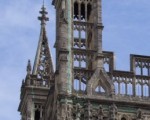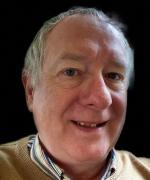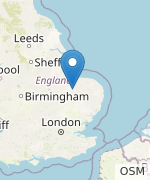Crenels and Merlons
John Vigar
- Region:
- East of England
- Notice Period:
- Regular (more than one month's notice)
- Type:
- Professional
- Fee:
- Paid
- Category:
- History
- Updated:
- 30th March 2019
- Tagged:
- Churches | Architecture | Castles | Battlements
Battlements have been a feature of British architecture for over a thousand years. Many of our iconic buildings feature them as an integral part of their design. Where would our medieval castles be without them – or our church towers? Yet for such a common architectural feature it is amazing how little they have been studied or the vast spread of their influence mapped.
The medieval use of battlements, of course, was firmly grounded in defence. The crenels –the gaps – and the merlons – the uprights – were first employed to create safe places from which to fire on your attackers. Very soon, though, they became a status symbol and only those on good terms with the Crown were allowed to put them on their houses.
Medieval churches also embraced the fashion and the later in history the more decorative and less defensive they become. The pierced battlements of Gloucester Cathedral, for instance, could never be regarded as defensive.
Throughout that period of history we call the gothic survival – the late Tudor and Stuart period when tradition fought against the Renaissance – battlements were still being used as if to maintain a link with the past. It is no wonder then that when the Gothick style became fashionable the long established battlements came into their own and were used on thousands of new buildings both functional and decorative. Landscaped gardens, too, used them with abandon but they also found a place in the landscape of the industrial revolution – on a Glaswegian factory!
This lecture looks at the chronology of battlements and explores a selection of buildings both famous and obscure to tell the story of this traditional and quirky feature.
Views: 2321 | Enquiries: 2About John Vigar
John has been a professional speaker for over 40 years. He lectured for the University of Kent from 1992 to 2010, teaching a variety of architectural and social history studies, and has worked on a sessional basis for many other academic institutions. He taught at Denman (the national college of the Women’s Institute near Oxford) for over 35 years. An enthusiastic and popular approach to his subject ensures that he has a large following of regular students.
In addition to his contracted lectures John is a popular speaker at meetings of many different groups including The Arts Society ( formerly NADFAS), the National Trust, and historical societies country-wide. His lecture tours to public Libraries and Colleges in Germany where he speaks on English literature and its links with topographical history are also well received.
John Vigar`s specialist subject is ecclesiology – the study of church architecture and associated topics. He has written extensively on the subject and regularly leads tours to churches across England, both as part of his own programme of activities, and for other organisations. John has written the guidebooks for several hundred churches and is the author of books on the historic churches of both Kent and Sussex. He has visited and recorded over 13,000 of the 16,000 Anglican churches in England and Wales.
After retiring from university lecturing John worked for 13 years in the south-east region of The Churches Conservation Trust and he is a Trustee of the oldest church conservation body, The Friends of Friendless Churches. John is also a member of the Advisory Council of The Norfolk Churches Trust and has previously served as Hon Sec of the Ledgerstone Survey of England and Wales and as Photographic Curator of The Kempe Society. He is a Trustee of The Francis Coales Charitable Foundation.
He runs the www.kentchurches.info and www.hampshirechurches.co.uk websites
All lectures now available by Zoom.
Other Talks on SpeakerNet by John Vigar
- Leave No Stone Unturned
- For Weddings, Baptisms and Funerals
- Murder Sex and Mayhem in English Churches
- Bedrooms, Banquets and Balls
- Curious Kent
- Churches in Retirement
- Exploring Sussex Churches
- Exploring Kent Churches
- Britain with Betjeman
- Superior Seats - where did we sit in church?
- The Church's Restoration
- Treasures in Norfolk Churches
- A chip off Queen Victoria’s Block
Send a message to the speaker
If you are interested in this talk and wish to contact the speaker, please complete the following form:


